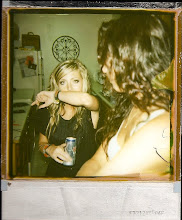- What is meant by “modernist” in the passage: “Critics engaged with a self-declared ‘New American Cinema’ exemplified by the work of writers and directors such as Jonas Mekas, Kenneth Anger, and John Cassavetes, certain aspects of which constituted, according to David Bordwell, a conscious ‘modernist’ break with Hollywood classicism”?
- Making "conscious 'modernist' break with Hollywood classicism" meant that these 'New American Cinema' artists/filmmakers were breaking away from the "classical Hollywood" ways of filmmaking, and striving to find better and different ways to create and present films. They strove for a more progressed form of film that had never been explored before that time, an experimental form of film, different than before--'modernist.'
2. What does Kramer argue was characteristic of the bulk of Hollywood-centred film criticism in the 1960s?
- It was focused on a "small group of Hollywood directors" from the studio era "in well-established genres such as the western."
3. What was Kael’s critique of art cinema and the New American Cinema, and why was Bonnie and Clyde “the most excitingly American American movie” at the time?
- Kael was disappointed in the New American Cinema because she was nostalgic for the way that 'traditional' film used to be. She claims that there is a lack of storytelling and 'craftsmanship' in this new form, that used to exist in film. She also states that "[t]he art-house audience accepts lack of clarity as complexity," which shows her disdain for this new 'foreign-like' form of filmmaking.
- She claimed that it related to American audiences in a way that other new American films at the time hadnt been able to do in some time, in the same effect that the "European films" were able to do. She thought that its invigorating technique in its use of characters was something to be praised, despite its difference from the traditional films from the past. For once this new cinema wasn't something to complain about, but something to praise and anticipate what is to come in the future of film after this work.

1 comment:
Good. You might want to follow up with the "Screening Modernism" review linked on the FST 377 blog to get a sense of what kind of breaks (styles, forms of narration) were associated with modernism.
Also, it's worth noting that basically Kramer's arguing that auteurism dominated in the 1960s, leading critics to re-examine the older Hollywood directors (Hitchcock, Hawks, etc.)
Post a Comment